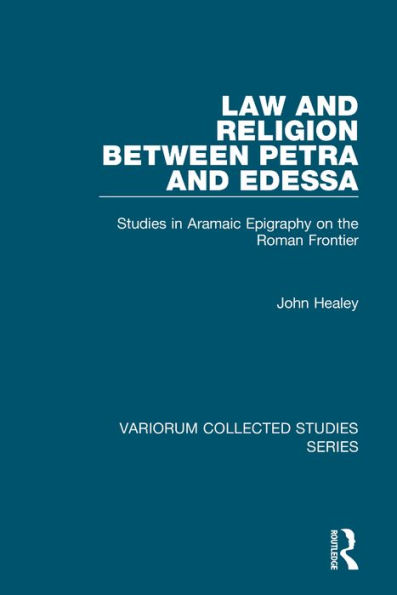Law and Religion between Petra and Edessa: Studies in Aramaic Epigraphy on the Roman Frontier
The thousands of surviving inscriptions in Middle Aramaic (e.g., in the Nabataean, Syriac and Palmyrene dialects) are an underused resource in the study of the Near East in the Roman period, especially in the study of religion and law. Particularly important was the emergence during this period of new peoples with their cultural roots in Arabia, such as the Nabataeans. This volume collects together, under the interrelated themes of religion and law, twenty-three articles by John Healey, with sections on "Petra and Nabataean Aramaic", "Edessa and Early Syriac" and "Aramaic and Society in the Roman Near East". Individual papers discuss the continuation of "Ancient Near Eastern" culture, the Aramaic legal tradition as well as the development of both written and spoken forms of Syriac and Nabatean.
1101317644
Law and Religion between Petra and Edessa: Studies in Aramaic Epigraphy on the Roman Frontier
The thousands of surviving inscriptions in Middle Aramaic (e.g., in the Nabataean, Syriac and Palmyrene dialects) are an underused resource in the study of the Near East in the Roman period, especially in the study of religion and law. Particularly important was the emergence during this period of new peoples with their cultural roots in Arabia, such as the Nabataeans. This volume collects together, under the interrelated themes of religion and law, twenty-three articles by John Healey, with sections on "Petra and Nabataean Aramaic", "Edessa and Early Syriac" and "Aramaic and Society in the Roman Near East". Individual papers discuss the continuation of "Ancient Near Eastern" culture, the Aramaic legal tradition as well as the development of both written and spoken forms of Syriac and Nabatean.
190.0
In Stock
5
1

Law and Religion between Petra and Edessa: Studies in Aramaic Epigraphy on the Roman Frontier
320
Law and Religion between Petra and Edessa: Studies in Aramaic Epigraphy on the Roman Frontier
320
190.0
In Stock

Product Details
| ISBN-13: | 9781409403678 |
|---|---|
| Publisher: | Taylor & Francis |
| Publication date: | 04/28/2011 |
| Series: | Variorum Collected Studies |
| Edition description: | 1 |
| Pages: | 320 |
| Product dimensions: | 6.10(w) x 8.90(h) x 1.10(d) |
About the Author
From the B&N Reads Blog
